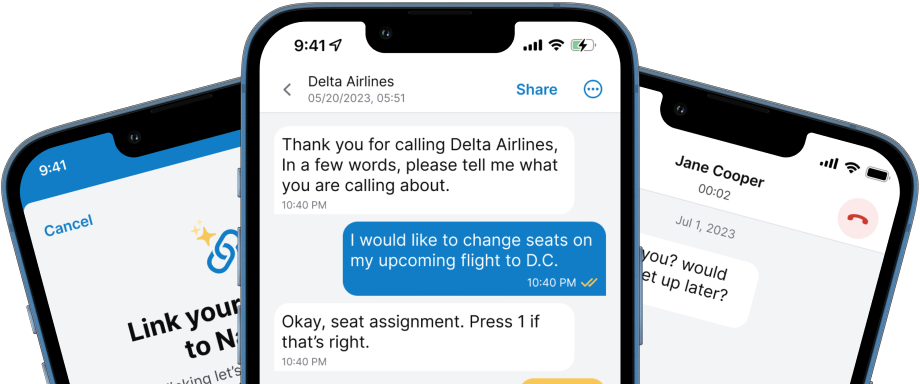Basic Tips on How to Communicate with Deaf People
In this article, we tackle the subject of basic approaches to effective communication with deaf and hard of hearing people. Click here to learn all about it!

If you’re not familiar with how to communicate with a deaf person, you might feel intimidated when you meet one of us for the first time. As a profoundly deaf (since birth) person myself, I appreciate the effort hearing people take to communicate with me. There are some important things to remember, however, before learning about methods of communication used by individuals with hearing loss.
How to get deaf and hard of hearing people’s attention
It’s normal to feel nervous when approaching a deaf or hard of hearing person. Here are a few ways to get their attention so you become comfortable with how to communicate with a deaf person.
Tap the person lightly on the shoulder
This may sound surprising to some hearing people, but it’s totally fine to tap a deaf person on the shoulder to get their attention. Simply walk up to the person and do it. They may appear startled at first because we don’t hear anyone approaching when we feel that shoulder tap. This is normal so don’t feel bewildered.
Wave your hand
If you’re in the person’s line of sight, you can wave to them. If that doesn’t get their attention, you can flap your hand until they turn their head.
Flick the lights
This is an easy way to get a deaf person’s attention, because it avoids startling. Simply turn the lights on and off, and the deaf person will turn their head to look for the source.
Communication etiquette

Deaf people take their cues from visuals to determine what’s going on around them. Some wear hearing aids or cochlear implants and some don’t. Some use sign language or speak and some don’t. It’s a wide spectrum so here are some etiquette tips to keep in mind.
Face the deaf person and make eye contact
This is probably the most important one to remember, and a crucial part of learning how to communicate with a deaf person. This is how deaf people communicate, by reading your facial expressions and gestures, and reading your lips. (It’s a misconception that all deaf people read lips. They don’t.) Avoid covering your mouth or looking away, as communicating with the deaf and hard of hearing means we need to understand what you’re saying. When an interpreter is around, make sure you speak to the deaf person, and not to the interpreter. It’s best to have the interpreter stand or sit next to you so the deaf person will be able to see both of you.
Check the deaf person’s preferred communication method
Deaf people have different preferences for communicating. They may prefer speaking, using sign language, or communicating with their smartphone or pen and paper. Because there are so many ways to communicate, it’s best not to assume and to ask them (or use gestures) how they prefer to communicate.
Give them space
An important part of knowing how to communicate with a deaf person means giving them space, standing about three or four feet apart from them. This is especially important for deaf people who wear hearing aids, are lip readers, or use sign language. Imagine being cramped in and not being able to fully see you express yourself with your face and hands.
Speak clearly and at a normal pace
Speak as you usually do, without exaggerated lip movements and enunciations. You may think this is helpful but it makes it harder for us to understand you. Speak simply and avoid using complicated words, not because we don’t know “big words” but because it requires concentration to follow a hearing person’s speech patterns. Concentration fatigue is real.
Be aware of noise and lighting
Because deaf people rely on visual cues, there are two things to be mindful of when communicating: noise and lighting. Noise should be at a minimal level and lighting should be good enough that you can clearly see the other person. Many deaf people have some hearing with the help of hearing aids and cochlear implants, and heavy background noise and dim lighting make any attempts at communication a struggle. If the noise is too loud, you can move to a quieter area with sufficient lighting.
Be patient and repeat yourself if necessary

Because you’re new to communicating with deaf people, it will take more time than it would talking with a hearing person. There is a lag in response time when a deaf person is “reading” what you’re saying. Be mindful of this. If necessary, repeat yourself. Avoid interrupting.
Use technology
There are some decent in-person communication apps that can make it easier communicating with the deaf and hard of hearing. Here are some that you can try:
- Nagish - Speech to text and text to speech over phone calls
- Cardzilla - Large easy to read notes
- Speak4Me (iOS): Text to speech
- Earfy (iOS): Live captioning
- Subtitles Viewer LIVE (iOS): Live captioning
- Live Transcribe (Android): Live captioning
- Ava (iOS): Speech to text
- Speechnotes (Android): Speech to text notepad
There are many more options but these are a good starting point.
Conclusion
Learning how to communicate with a deaf person can be intimidating if you’re a hearing person. By following these tips, you’ll make the process much smoother. Plus, you show your interest in being inclusive by stepping out of your comfort zone to learn more about communication methods for deaf people.



.jpg)

